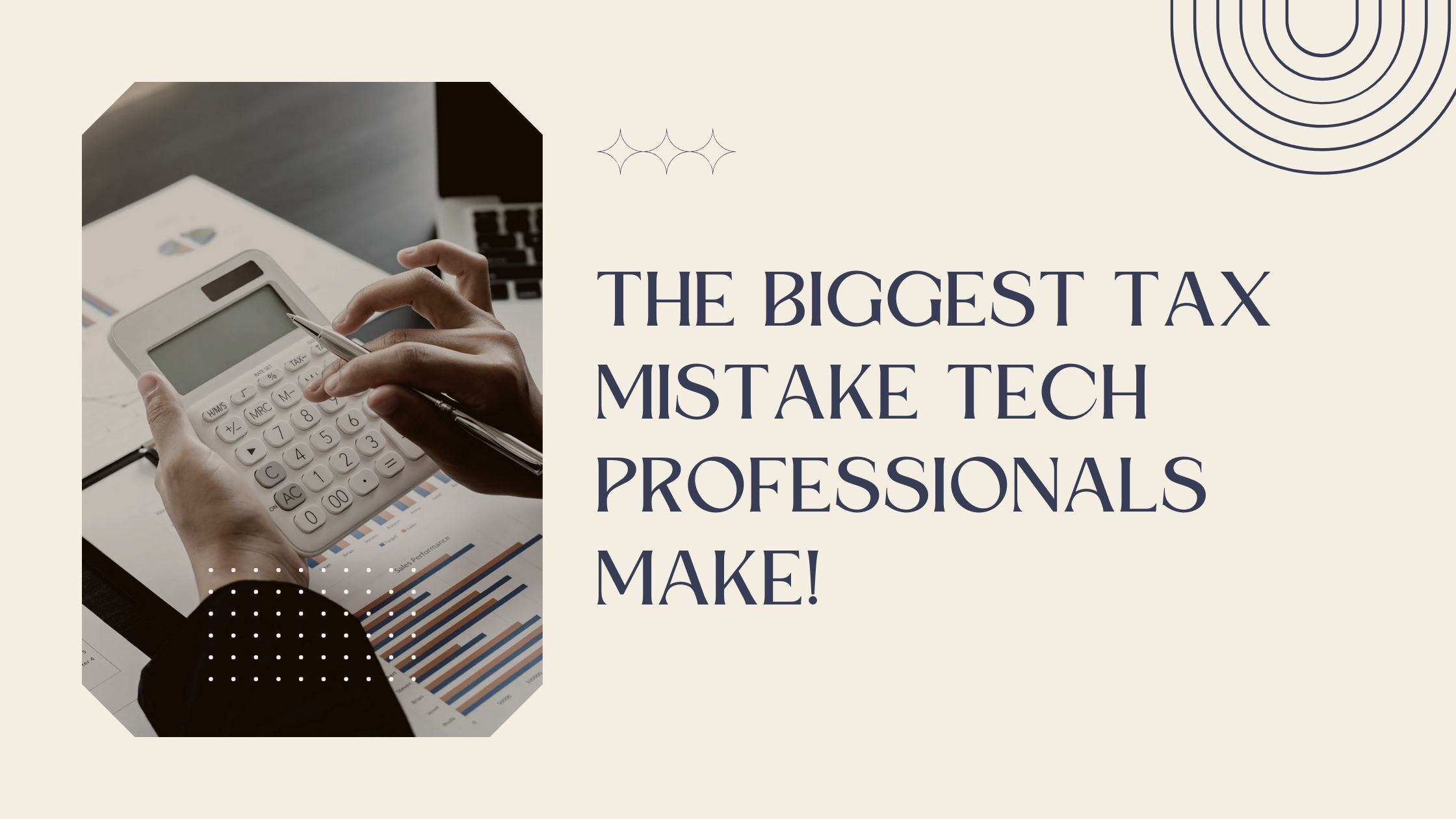Tech Professionals: Here’s How To Save For Retirement
True Root Financial is a financial advisor and financial planner based in San Francisco, CA. We serve clients across the globe.
As a tech professional, it’s natural to focus on upcoming technologies and the future. But it’s equally crucial to think about your own future. That’s where retirement savings come in. There are various options available, each with its own rules and benefits. Knowing about them can help secure your financial stability down the road.
Key Takeaways:
- Build a foundation for budgeting and investing
- Take full advantage of employer matching in 401(k) plans
- Consider the tax benefits of Roth accounts for long-term savings
- Use Health Savings Accounts for tax-efficient healthcare and retirement savings
- Save at least 15% of your pretax income each year for retirement from age 25 to 67
- Gradually raise your contribution rate at least by 1% or 2%
- Start early but it’s never too late. Consider True Root Financial to find the best investment and savings plan for you.
The Basics
Before diving into specific retirement savings vehicles, let’s briefly touch upon the basics:
401(k): A 401(k) is an employer-sponsored retirement savings plan that allows employees to contribute a portion of their pre-tax salary. Many employers also offer matching contributions, making it a powerful tool for building retirement wealth.
After-tax (Roth) 401K: Some employers offer an after-tax (Roth) 401K with tax-free growth and withdrawals in retirement. It’s beneficial if you expect to be in a higher tax bracket later. It also has higher contribution limits than a Roth IRA, making it an excellent tool for maximizing retirement savings.
IRA (Individual Retirement Account): An IRA is a retirement account that individuals can open independently of their employer. Contributions to a Traditional IRA may be tax-deductible, while contributions to a Roth IRA are made with after-tax dollars, but qualified withdrawals are tax-free.
Roth IRA: A Roth IRA offers tax-free withdrawals in retirement, provided certain conditions are met. Contributions are made with after-tax dollars, and there are income limits for eligibility.
HSA (Health Savings Account): While primarily used for healthcare expenses, an HSA can also serve as a retirement savings vehicle. Contributions are tax-deductible, earnings grow tax-free, and withdrawals for qualified medical expenses are tax-free. Watch our video here where we explain how HSA accounts carry the most tax advantages among all retirement vehicles.
Solo 401K or SEP (Simplified Employee Pension): Both solo 401k and SEP are designed for self-employed individuals and small business owners. Solo 401K will give you the most retirement savings. Hence, they are the better option for most self-employed individuals. SEP IRAs on the other hand are easy to open. Contributions to a solo 401K can be made by both the employee and employer and are tax-deductible. Solo 401(k) arrangements enable individuals to borrow funds up to the lesser of half the plan balance or $50,000. However, loans are not an option within SEP plans.
Note📝: If you are not maxing out your 4011K contribution, gradually raise your contribution rate. Even a small increase of 1% or 2% can make a huge difference in your retirement savings.
So, How Much Do You Need To Save?
Here are some general guidelines from Fidelity and Bank of America about how much you need to have saved by a certain age in order to retire. However, these are based on general assumptions and in order to know exactly how much you need to save for your retirement, you have to do a personalized financial plan. This means looking at your assets and investments and comparing it to your spending and future expenses to see if you have sufficient saved or will need more.
| Age | Savings |
|---|---|
| By age 30 | 1x your income |
| By age 40 | 3x your income |
| By age 50 | 6x your income |
| By age 60 | 8x your income |
| By age 67 | 10x your income |
Source: Fidelity
Source: Bank of America Retirement & Personal Wealth Solutions, “Financial Wellness: Helping improve the financial lives of your employees,” 2023. Note: Calculations are based on obtaining 39% of income replacement from retirement savings (pre-tax) for middle-income households of $40,000 to $100,000 annually.
Maximizing Your Savings Potential
As a tech professional, you likely have a higher-than-average earning potential, which means you have the opportunity to save more for retirement. Here’s how you can make the most of your hard-earned money:
- Maximize Employer Contributions: If your employer offers a 401(k) match, contribute at least enough to capture the full match. It’s essentially free money that can significantly boost your retirement savings.
- Contributing to After-tax 401K Roth: Contributing to a Roth 401(k) involves using after-tax dollars, allowing your investments to grow tax-free. In retirement, withdrawals are tax-free, making it beneficial if you expect to be in a higher tax bracket later. Additionally, Roth 401(k)s have higher contribution limits than Roth IRAs, enabling greater savings.
- Consider Roth Options: Depending on your current and future tax situation, a Roth IRA may be advantageous. Since tech professionals often see their incomes rise over time, paying taxes now at a lower rate could be beneficial in the long run.
- Diversify Your Investments: Tech professionals often have a deep understanding of the industry, but don’t let that lead to over-concentration in tech stocks or funds. Diversify your investments across different asset classes to reduce risk.
- Explore HSA Contributions: If you’re enrolled in a high-deductible health plan (HDHP), consider maximizing contributions to your HSA. Not only can it help cover current medical expenses, but it can also serve as a tax-efficient way to save for retirement healthcare costs.
- Self-Employed? Consider a solo 401K: If you’re a freelancer or run your own tech consultancy, a Solo 401(k) offers a tax-efficient way to save for retirement while reducing your taxable income. It generally provides greater tax savings, making it a more powerful tool for maximizing your retirement contributions.
Should You Contribute To A Traditional 401K Or After-Tax Roth ?
Traditional 401(k) contributions are taken out before taxes, while Roth contributions come after-tax. If you’re earning more now than you expect to in the future, a traditional 401(k) might suit you better. Similarly, if you anticipate a decrease in income soon, like reducing work hours or early retirement, opting for a traditional 401(k) could be wise.
However, looking at tax trends, current rates are historically low and could rise. So, despite earning more presently, a Roth could still be beneficial due to potentially higher future tax rates. With this in mind, it’s practical to explore both options and contribute to both if possible
Where To Save?
Now that you understand the various retirement savings options available, the next step is to decide where to allocate your contributions. Here are a few considerations:
401(k): At least contribute enough to your 401(k) to capture any employer match. If possible, max out your 401K contribution
IRA or Roth IRA: If your employer doesn’t offer a 401(k) or if you’re looking for more investment flexibility, consider opening an IRA or Roth IRA. Whether you prefer delayed gratification or immediate tax relief, both offer pathways to a secure retirement.
HSA: If you’re eligible for an HSA, prioritize contributions to cover current medical expenses and save for future healthcare costs in retirement. Many HSA providers offer investment options once your balance reaches a certain threshold, allowing you to grow your savings even further.
Solo 401k/ SEP IRA: A Solo 401(k) is a retirement plan for self-employed individuals and small business owners with no employees. It allows for higher contributions by combining employer and employee contributions. In 2024, the maximum contribution limit for a Solo 401(k) is $69,000. Individuals aged 50 or older can make an additional catch-up contribution of $7,500. SEP IRA contribution limits are set annually and are typically higher than those for standard IRAs and 401(k)s.
Consult with a financial advisor to determine the optimal contribution amount based on your income and tax situation.
Non-retirement account: Many people focus on saving for retirement but may not have much saved in non-retirement accounts like individual or joint investments. Remember, you can’t withdraw from retirement funds penalty-free until age 59.5. If you plan to retire early or need money before then, you’ll face taxes and penalties. So, as you contribute to 401(k)s and IRAs, it’s wise to keep some savings in non-retirement accounts too. Invest this money to ensure it’s not just sitting idle
Here’s The Next Step For You
Feeling like you’re behind on saving your hard-earned money? Begin by analyzing your assets and cashflows to see if you’re saving adequately and where/how you could improve. This is the first step we take in creating a financial plan for our clients. If you’re interested in learning how we do this, book a call today.










Leave a Reply
Want to join the discussion?Feel free to contribute!